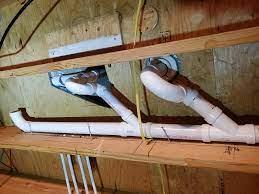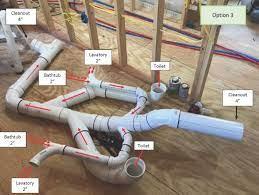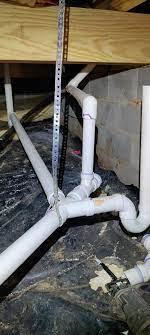Wet venting is an essential concept in modern plumbing, providing an efficient way to vent multiple fixtures through a common pipe. This guide aims to explain what wet venting is, its benefits, and how to install a wet vent system effectively. We will also discuss specific considerations such as the correct hot water heater vent pipe size and other important factors in wet venting plumbing.
Understanding Wet Venting

What is Wet Venting?
Wet venting is a plumbing technique where one pipe serves as both a drain and a vent for multiple fixtures. This method is commonly used to simplify the plumbing system and reduce the number of pipes needed in a building.
What is Wet Venting in Plumbing?
In plumbing, wet venting involves using a single vent pipe to service multiple plumbing fixtures. This approach can improve efficiency and reduce installation costs while maintaining proper drainage and venting.
Horizontal Wet Vent
A horizontal wet vent is a specific type of wet venting where the vent pipe runs horizontally, typically serving fixtures located on the same floor. This method is efficient for layouts where fixtures are aligned horizontally.
Understanding Horizontal Wet Venting
Horizontal wet venting is commonly used in residential plumbing systems. It allows for the efficient venting of fixtures such as sinks, toilets, and bathtubs that are located in close proximity on the same floor.
Wet Venting Plumbing Installation

Basic Principles of Wet Venting
Wet venting requires careful planning and adherence to plumbing codes to ensure that all fixtures are properly vented and drained. The following steps outline the basic principles of wet venting installation:
- Identify Fixtures: Determine which fixtures will be included in the wet vent system.
- Pipe Sizing: Choose the appropriate pipe size to accommodate the drainage and venting needs. For example, the hot water heater vent pipe size must be correctly matched to ensure proper ventilation.
- Routing Pipes: Plan the routing of pipes to ensure efficient drainage and venting. Horizontal wet venting can be particularly effective for fixtures located on the same floor.
Specific Considerations
Hot Water Heater Vent Pipe Size
The hot water heater vent pipe size is critical for ensuring proper ventilation and preventing the buildup of dangerous gases. Make sure to follow manufacturer guidelines and local codes when selecting the vent pipe size.
Gas Water Heater Vent Size
Similar to electric water heaters, gas water heaters require specific vent sizes to ensure safe operation. The gas water heater vent size must be correctly matched to the heater’s capacity and installation requirements.
Wet Venting in Plumbing Benefits and Installation Tips
Wet venting offers several advantages for residential and commercial plumbing systems:
- Reduced Material Costs: By using fewer pipes, wet venting can significantly reduce material costs.
- Simplified Installation: Fewer pipes mean simpler installation and potentially shorter installation times.
- Space Savings: Wet venting can save space within walls and floors, making it ideal for compact or complex layouts.
Installation Tips
- Follow Codes: Always adhere to local plumbing codes and regulations to ensure a safe and compliant installation.
- Proper Slope: Ensure that all horizontal pipes have the proper slope to facilitate drainage and prevent clogs.
- Use Quality Materials: Invest in high-quality pipes and fittings to ensure the longevity and reliability of your wet venting system.
Additional Venting Considerations

Studor Vent Washing Machine
A Studor vent, or air admittance valve, can be used for appliances like washing machines. This valve allows air to enter the drainage system without the need for a vent pipe extending to the roof.
Two Way Air Vent Plumbing
Two way air vent plumbing systems allow air to flow in both directions, which can be useful for maintaining proper pressure and preventing siphoning in complex plumbing layouts.
Toilet Wet Venting
Toilet wet venting is a common application of wet venting, where the vent pipe serves both the toilet and other fixtures like sinks and showers. This method is efficient and space-saving.
Addressing Common Questions
What is a Wet Vent?
A wet vent is a single pipe that functions as both a drain and a vent for multiple plumbing fixtures. It simplifies the plumbing system and can reduce installation costs.
Why Use Wet Venting?
Wet venting is used to streamline the plumbing system, making it more efficient and cost-effective. It is particularly useful in residential settings where multiple fixtures are located close to each other.
Conclusion
Wet venting is a practical and efficient plumbing technique that offers numerous benefits, including reduced costs and simplified installations. By understanding what wet venting is and how to implement it properly, you can optimize your plumbing system’s performance and reliability. Always follow local codes and manufacturer guidelines to ensure a safe and effective installation.
